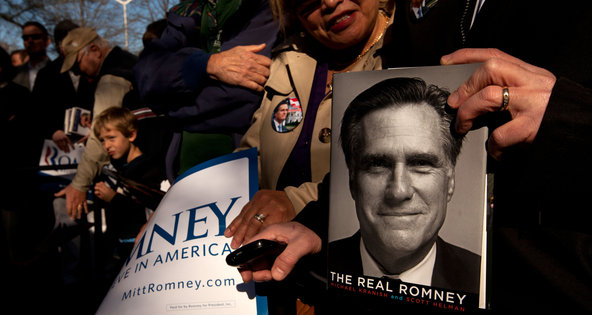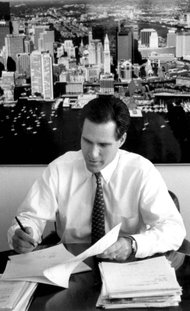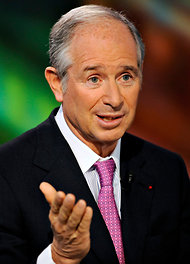The campaign, which got under way last week, is the first for the Balance Bar brand since it was acquired by NBTY, formerly Nature’s Bounty, which is owned by the Carlyle Group. NBTY and Carlyle agreed to buy Balance Bar at the end of November from Brynwood Partners, which acquired the brand from Kraft Foods in 2009.
It is hard to say whether brands that change hands often underperform because they have several corporate parents in a short time or whether they keep changing hands because they are already underperforming. Whatever happened with Balance Bar, NBTY executives say they are committed to revitalizing the brand.
“Carlyle is significantly interested in building brands,” says Katia Facchetti, chief marketing officer at NBTY in Ronkonkoma, N.Y. “A great example is Dunkin’ Donuts under its ownership.”
Her reference is to the period from December 2005 through August 2012, when Carlyle, along with two other private equity giants, Bain Capital and Thomas H. Lee Partners, owned Dunkin’ Donuts. During that time, the chain started its successful “America runs on Dunkin’ ” campaign.
The Balance Bar campaign carries the theme “Have you found your Balance?” — yes, “Balance” with a capital B, to reinforce the brand name. The campaign has a budget estimated at $5 million from now through September.
The effort is extensive, including a commercial, magazine advertisements, coupon inserts in newspapers, content on the Balance Bar Web site, online banner ads, ads in stores, a public relations initiative, sampling programs and a presence in social media like Facebook and Twitter.
The creative aspects of the campaign are being handled internally at NBTY. Moosylvania, an agency in St. Louis that worked for Balance Bar under the Brynwood ownership, is continuing to handle tasks that include balance.com and social media. The media buying duties are handled by Havas Media in New York, part of Havas, and 360 Public Relations in Boston is the public relations agency.
NBTY and Carlyle were interested in Balance Bar “to augment our portfolio” in the “active nutrition business,” Ms. Facchetti says, which includes brands like Body Fortress, MET-Rx and Pure Protein.
“There were several things about Balance Bar that made it appealing,” she adds, among them its “latent brand equity” and its “broad consumer base,” despite the lack of significant marketing support.
According to Kantar Media, a division of WPP that tracks ad spending in major media, Balance Bar spent $91,000 last year, $2,000 in 2010, nothing in 2009 and nothing in 2008. The only recent year when there was any ad spending of note was 2011, with $1.4 million.
“People still knew the brand, and loved the product, but it wasn’t top of mind,” Ms. Facchetti says. That was reflected in Balance Bar’s sales, which ranked seventh among the major nutrition bars according to Nielsen data shared by NBTY, coming after Clif Bar, Zone Perfect, Special K Protein Meal Bar, Pure Protein, Power Bar and Kind.
“You always want to support your brand as much as possible,” says Erin Lifeso, senior director of marketing for Balance Bar, who has been working on the brand since early 2010 and moved over to NBTY when the sale was made.
Under Brynwood, the emphasis was on “maximizing shelf distribution, developing new product offerings,” Ms. Lifeso says, and marketing took forms like “sampling events at the grass-roots level and social media.”
“We just didn’t have the spend” for advertising, she adds, which was unfortunate because “if you get people to taste it, they love it, and if you remind them about it, they go buy it.”
The new Balance Bar campaign is being aimed at consumers 25 to 54 years old. To make it easier for the ads to stand out amid the clutter, Ms. Lifeso says, “we wanted to make sure we have an ownable, iconic visual.”
Such an image is a centerpiece of the campaign: a seesaw, or teeter-totter, that is meant to symbolize what Ms. Lifeso calls “our teeter-totter world.”
“Everyone leads busy lives; we run from one thing to the next,” she says, and during a hectic day Balance Bar is intended “to keep you in balance.”
In the commercial, which is 15 seconds long, an animated couple in office attire is seen dashing after a commuter train, followed by the same couple, in athletic gear, exercising. The camera pulls back to show that the man and woman are on a seesaw; they are replaced there by a cookie-dough-flavor Balance Bar.
“Whether you’re running for a train or training for a run, find your balance,” a female announcer says. “Every delicious Balance Bar has 40-30-30 balanced nutrition, to give you energy that lasts.”
On screen, a diagram appears to show what the “40-30-30” refers to: a nutritional formula of 40 percent carbohydrate, 30 percent protein and 30 percent fat, echoing the dietary principles of Dr. Barry Sears, who popularized the Zone diet and brought out Balance Bar in 1992.
The commercial ends with the narrator’s final words: “Balance Bar. Have you found your Balance?”
The print ads take an identical approach, also depicting the couple and using the contrasts of “running for a train” and “training for a run.”
Two additional commercials are being developed, Ms. Facchetti says, and both will also use the seesaw because research among consumers who were shown the first commercial found “it signaled ‘balance’ instantly to them.”
Another benefit was that “you couldn’t put another brand, another bar” in the seesaw spots, she adds, because of how it symbolizes balance.
The tactic of incorporating a brand’s name into a slogan, jingle, theme or other intrinsic aspects of a campaign is a mnemonic device that has become known as “nameonics” on Madison Avenue.
Examples include “Vanguarding,” for Vanguard mutual funds; “Power through,” for Powerade sports beverages; “Zestfully clean,” for Zest soap; and, most recently, “It’s time for a Maacover,” for the Maaco chain of auto paint and body shops, which replaced another nameonics campaign, “Uh-oh, better get Maaco.”
***
Because of the Memorial Day holiday next Monday, look for the next issue of In Advertising on Tuesday, May 28.
If you like In Advertising, be sure to read the Advertising column that appears Monday through Friday in the Business Day section of The New York Times print edition and on nytimes.com.
Article source: http://www.nytimes.com/2013/05/20/business/media/campaign-seeks-to-strike-the-right-balance.html?partner=rss&emc=rss







